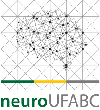Banca de DEFESA: EMANUELE LOS ANGELES NUNES BEZERRA
Uma banca de DEFESA de MESTRADO foi cadastrada pelo programa.STUDENT : EMANUELE LOS ANGELES NUNES BEZERRA
DATE: 02/05/2023
TIME: 13:00
LOCAL: https://conferenciaweb.rnp.br/webconf/daniel-25
TITLE:
EFFECT OF FREEZING OF GAIT AND ANTIPARKINSONIAN MEDICATION ON TRUNK AND UPPER LIMBS BIOMECHANICS DURING GAIT IN INDIVIDUALS WITH PARKINSON'S DISEASE
PAGES: 50
BIG AREA: Outra
AREA: Multidisciplinar
SUMMARY:
Introduction: The use of Levodopa represents a therapeutic advance in individuals with Parkinson's disease (PD). However, gait is partially responsive to antiparkinsonian medication. A factor that alters locomotor parameters is the presence of freezing of gait (FoG). Objective: This study aims to analyze the effect of FOG and Levodopa on the biomechanics of the trunk and upper limbs (UL) during gait in individuals with PD. Methods: We evaluated 22 participants with idiopathic PD. All participants performed the clinical and gait evaluations in two pharmacological conditions, ON – under the effect of medication – and OFF, 12 hours without ingestion of PD-related medications. Participants were divided according to the presence of FoG symptoms. For the control group, 35 age-controlled healthy participants were selected from an open database. All participants walked on the ground at 10 meters of length at a comfortable and self-selected speed. The kinematic variables of the trunk and upper limbs and the clinical characteristics of the groups in each condition were compared in the following analyses: 1) linear mixed-effects models were fitted, controlling for differences in speed, demographic characteristics, and clinical scales for comparison between groups with PD: Group (PD FoG and PD nFoG) and condition (ON and OFF); 2) ANOVA was used for comparisons between PD and control groups: Group PD FoG and PD nFoG both in ON condition and control group, Group PD FoG and PD nFoG both in OFF condition and control group. For the analysis of interactions, Bonferroni's post hoc was used. Results: This study found that the disease reduces the amplitude of the upper limbs but does not affect the trunk. UL is poorly responsive to L-DOPA. The presence of FoG does not alter trunk movement and has limited influence on upper limbs. In the FoG group, there is evidence of compensatory arm strategies to maintain dynamic balance. Additionally, there is no interaction between medication and FoG. Conclusion: These results suggest that arm movement and FoG symptoms involve mechanisms not limited to L-DOPA. Thus, studies investigating other neurotransmitters and non-neurochemical factors are needed to understand how FoG impacts upper limb and trunk movement during gait.
COMMITTEE MEMBERS:
Presidente - Interno ao Programa - 2418537 - DANIEL BOARI COELHO
Membro Titular - Examinador(a) Externo ao Programa - 2090962 - REGINALDO KISHO FUKUCHI
Membro Titular - Examinador(a) Externo à Instituição - LUIS MOCHIZUKI - USP
Membro Suplente - Examinador(a) Interno ao Programa - 1762416 - RUTH FERREIRA GALDUROZ
Membro Suplente - Examinador(a) Externo ao Programa - 2352005 - RENATO NAVILLE WATANABE
Membro Suplente - Examinador(a) Externo à Instituição - LUCAS SIMILELI - UNESP




